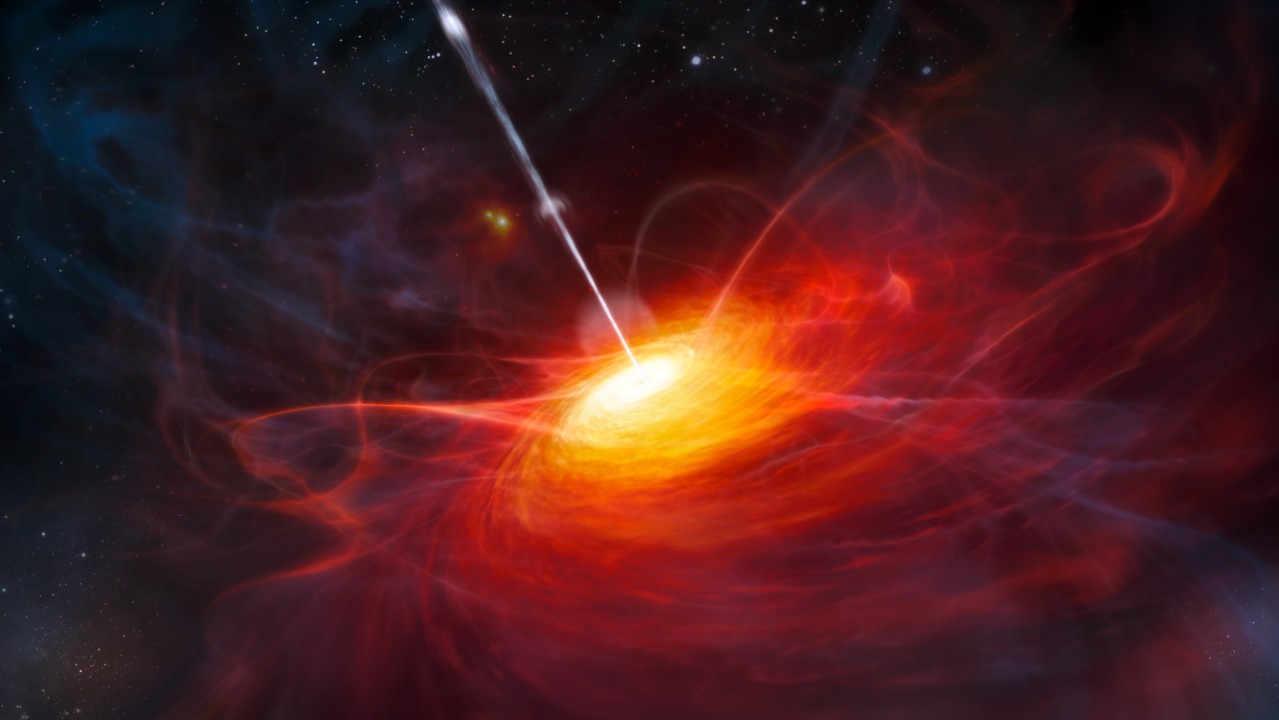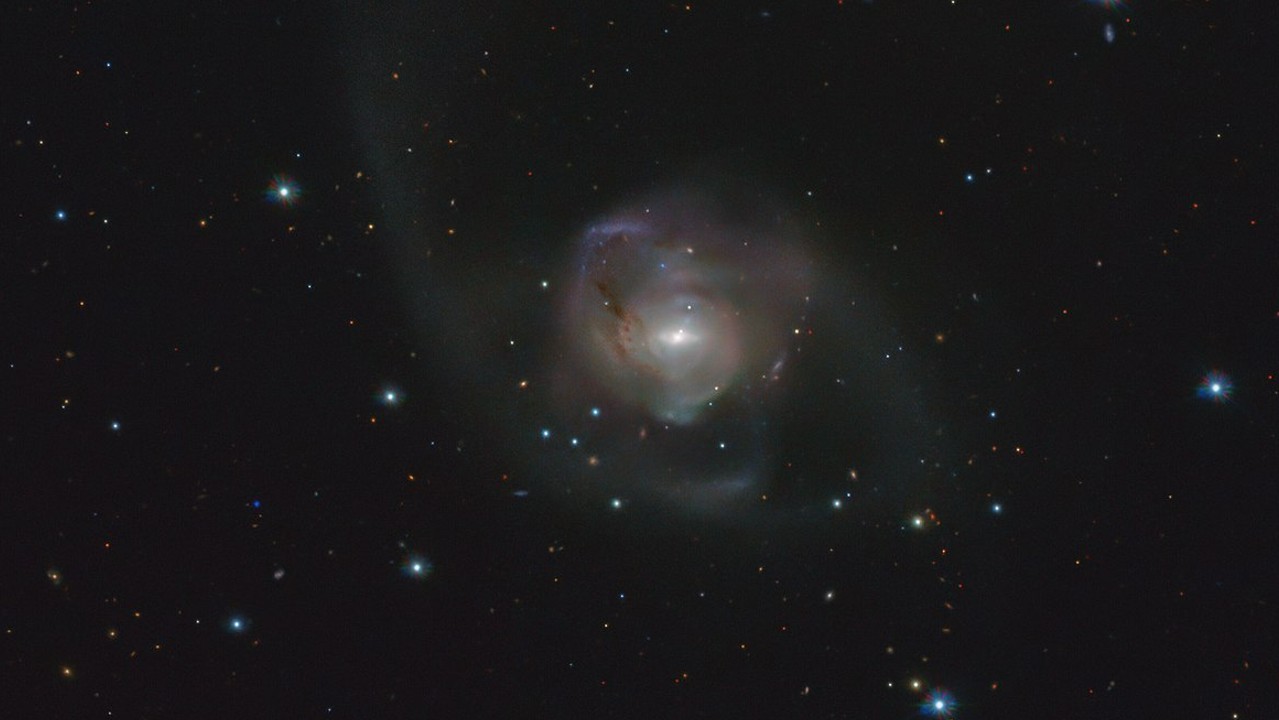Supermassive black holes: Theory, characteristics and formation
A look at the supermassive black holes that lurk at the heart of most galaxies.

Only a handful of supermassive black holes have been confirmed by scientists, but the universe could be filled with billions of these gravitational giants.
Theoretically, if you compress a sufficient amount of matter into a small enough space, it will create such a powerful gravitational field that nothing — not even light — can escape from it. That’s the basic idea behind black holes, and it’s so bizarre that for many years people thought they couldn’t possibly exist in reality, according to University of Texas in Austin.
Yet today we know the universe is filled with them — perhaps as many as one for every ten visible stars, according to Live Science. A few of those black holes are truly enormous, with masses millions of times greater than the sun. Here we take a closer look at the strange world of supermassive black holes.
How big are supermassive black holes?
It’s impossible to observe a black hole directly, because — as their name suggests — they don’t emit any light or other radiation. But they can be detected via their gravitational effect on visible stars in their neighbourhood, which orbit around the black hole much faster than they would around a normal object of similar size.
By measuring the speed of stars close to the black hole, astronomers can estimate its mass. That’s how they know, for example, that the black hole at the center of our own galaxy has a mass around four million times that of the sun, according to NASA.
As big as that sounds, it’s really quite tiny compared to the largest supermassive black holes that have been measured — some of which approach 100 billion solar masses,
Supermassive black hole examples

Leo I dwarf galaxy
Although this tiny galaxy is only about 20 million solar masses in total, its central black hole is proportionately huge, at around 3 million solar masses.

Centaurus A
This huge elliptical galaxy – a cosmic neighbour at just 13 million light-years – is a powerful radio emitter thanks to the 55 million solar mass black hole at its center.

NGC 7727
The product of two merging galaxies, NGC 7727 still retains two separate supermassive black holes – of 154 and 6.3 million solar masses – just 1,600 light-years apart near its center.

Abell 2261
This cluster of galaxies is estimated to have a black hole of up to 100 billion solar masses near its center. Frustratingly, its exact location continues to elude detection.
Black holes at the center of galaxies
Rather than devouring anything that ventures too close to them, the black holes at the centers of most galaxies only give away their existence through subtle effects on nearby stars. In an active galaxy, however, the supermassive black hole behaves a lot differently.
Breaking space news, the latest updates on rocket launches, skywatching events and more!
When surrounded by a swirling "accretion disk" of rapidly rotating gas and dust, matter is constantly spiralling down into the black hole. In the process, it releases enormous amounts of energy, sometimes even outshining the rest of the galaxy.
In 2019 the Event Horizon Telescope succeeded in photographing one such galaxy — Messier 87 — producing a direct image of the accretion disc. The ominous shadow of the galaxy’s 6.5 billion solar mass black hole is clearly visible, quite literally as a "black hole" at the center of the disk.
How supermassive black holes are formed
Movies often portray black holes as giant cosmic vacuum cleaners, relentlessly sucking in other material until there’s nothing left. If that was how real black holes worked, there’d be no mystery as to where the supermassive kind came from: once an "ordinary" black hole had formed from stellar collapse, it would simply grow and grow until it reached enormous size. But real black holes don’t suck matter in like this; they merely attract it with the same law of gravity as a normal object of the same mass.
Their exceptional nature comes from the fact that they’re super-condensed and the force of gravity increases as distance decreases. So it’s possible for an orbiting object to stray into a region where gravity becomes incredibly strong. At larger distances, however, a black hole’s gravity is perfectly normal. But if a black hole is incapable of sucking in distant matter, how does it ever grow to supermassive size? At present no one knows the answer to this, although there are several promising theories.
Although they may not be the rapacious predators portrayed in sci-fi, we know that some black holes do absorb new material and that’s what’s going on in the accretion disks of active galaxies, for example. Occasionally pairs of black holes crash into each other and merge to produce a single, larger black hole and we know that from the evidence of gravitational waves, which have been observed on a regular basis since they were first discovered in 2015.
But accretion and mergers, while undoubtedly part of the solution, aren’t enough in themselves to explain the observational evidence for supermassive black holes. That’s because we know the first active galaxies — which must have been powered by central black holes – were formed very early in the life of the universe. For example, a supermassive black hole of a billion solar masses is believed to have existed in one galaxy more than 12 billion years ago — around 90% of the way back to the Big Bang.
It’s possible that the stellar life cycle, which is so crucial to the standard model of black hole formation, had nothing to do with the creation of the oldest supermassive black holes. Instead, they may have formed almost immediately from the gravitational collapse of an enormous cloud of gas — one that already contained as much matter as millions of stars. According to this theory, a "direct collapse black hole" of this kind would have taken around 150 million years to form — the blink of an eye in cosmic terms.
Another hypothesis invokes the idea of primordial black holes, which are theorised to have been created in the Big Bang itself. These are sometimes proposed as a possible explanation for dark matter, and are generally assumed to have been quite small in size. However, they might have served as the basic seeds from which present-day supermassive black holes grew .
Additional resources
For more information about black holes check out " Death by Black Hole - and Other Cosmic Quandaries" by Neil deGrasse Tyson and "Gravity's Fatal Attraction: Black Holes in the Universe" by Mitchell Begelman and Martin Rees.
Bibliography
Patchen Barss, "The mysterious origins of Universe's biggest black holes", BBC, August 2021.
University of Texas in Austin, "History of Black Holes", accessed January 2022.
Stephen Batttersby, "Monster munch: How did black holes get vast so fast?", New Scientist, March 2013.
Alison Klesman, "What are primordial black holes?", Astronomy, July 2019.
ESA, "What happens when two supermassive black holes merge?", May 2019.
NASA, "Exploring Active Galactic Nuclei", February 2016.
Shobha Kaicker, "How do astronomers calculate the mass of a black hole?", Astronomy, April 2020.
NASA, "Black Holes", March 2022.
NASA, "Active Galaxies", September 2021.
NASA, "Stars", September 2021.

Andrew May holds a Ph.D. in astrophysics from Manchester University, U.K. For 30 years, he worked in the academic, government and private sectors, before becoming a science writer where he has written for Fortean Times, How It Works, All About Space, BBC Science Focus, among others. He has also written a selection of books including Cosmic Impact and Astrobiology: The Search for Life Elsewhere in the Universe, published by Icon Books.
- Scott DutfieldContributor
